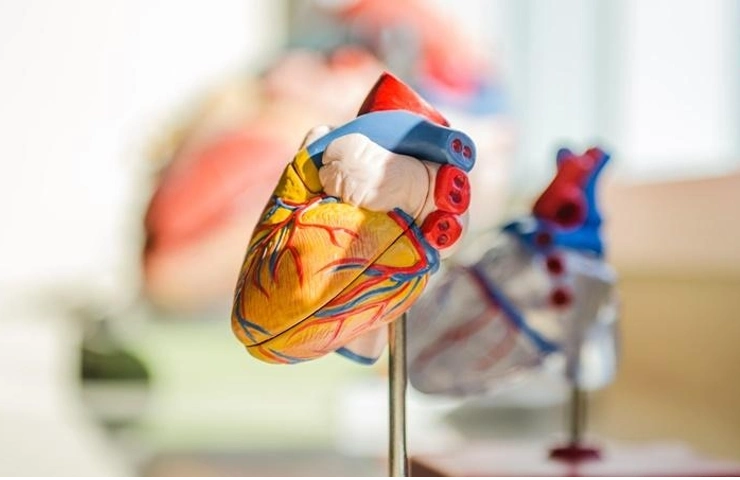

A heart to heart conversation with other organs in the body (Photo: IANS)
<p>
Researchers uncover the proteins involved in key communication networks, which could help us better understand conditions like cancer and obesity.</p>
<p>
As the researchers described in Open Biology on August 10, 2022, their new mouse model marks the proteins that a cell secretes and tracks their movement throughout the body. This novel technology could shape our molecular understanding of healthy versus diseased tissue, as well as the role that inter-organ communication plays in disease onset and progression.</p>
<p>
&quot;This new model can be likened to establishing a passport system in the body, as we are identifying where proteins are coming from and where they&#39;re going,&quot; says study co-first author Ilia Droujinine, PhD, Scripps fellow and principial investigator in the Department of Molecular Medicine at Scripps Research. &quot;We can finally bring these interconnected communications networks to light, and then develop treatments based on this new knowledge.&quot;</p>
<p>
Researchers have used other methods, such as viral approaches, to understand protein secretion and the ways that organs communicate with each other. While these techniques have provided invaluable insight into the proteins expressed in an organism, they aren&#39;t sensitive enough to label low-abundance proteins, or the origin and ultimate destination of protein interactions. But with this new model, scientists are now able to understand the exact path a particular protein takes.</p>
<p>
In the study, the researchers used an enzyme called BirA*G3, which labels secreted proteins with a biotin tag. These biotin labels were then detected in live mice using a method called quantitative mass spectrometry proteomics, which is used to measure proteins in a sample. This revealed where the proteins originated from and where they traveled to in the body.</p>
<p>
When BirA*G3 was broadly activated throughout the body, the researchers found that all secreted proteins were successfully labeled, even low-abundance proteins with hormone-like properties. Likewise, when BirA*G3 was activated solely in the liver, only secreted proteins related to that organ system were highlighted — displaying the high specificity of the model as well.</p>
<p>
&quot;Given the central role of key secreted proteins such as insulin, there is a great deal of interest in identifying novel secreted proteins,&quot; said Andrew McMahon, PhD, senior author of the study and chair of the Department of Stem Cell Biology and Regenerative Medicine at the University of Southern California. &quot;Genome studies are suggesting that many new proteins remain to be characterized. We&#39;re looking forward to a deep dive into this area now that we have validated the technology.&quot;</p>
<p>
There are countless research applications for this technology, Droujinine notes. With this type of model, scientists can start to map unexplored disease pathways and ultimately develop targeted treatments, as many diseases originate in a single organ and then eventually spread to others. Cancer, with its metastatic properties, is one example. For another, studies have shown that many of the health complications that arise from obesity could be due to faulty organ communication, yet many of the molecular mechanisms remain unknown.</p>
<p>
&quot;Any protein we discover that plays a role in disease has the potential be translated into a therapeutic,&quot; adds Droujinine.</p>
<p>
In addition to Droujinine and McMahon, authors of the study, &quot;A genetic model for in vivo proximity labelling of the mammalian secretome,&quot; include Rui Yang, Amanda S. Meyer, Jinjin Guo, Jill A. McMahon of the University of Southern California (USC)&nbsp;</p>
Union Defence Minister Rajnath Singh on Wednesday expressed deep sorrow over the loss of innocent…
In the aftermath of the tragic terror attack that led to the death of many…
India appreciated the Saudi Arabian side for continuing their welfare programmes for almost 3 million…
Kobbi Shoshani, Consul General of Israel to Midwest India, Mumbai on Wednesday condemned the terrorist…
Amjad Ayub Mirza, a political activist from Pakistan-occupied Jammu and Kashmir (PoJK) currently based in…
Following Tuesday's terror attack in Pahalgam that had left Kashmir Valley in deep mourning and…